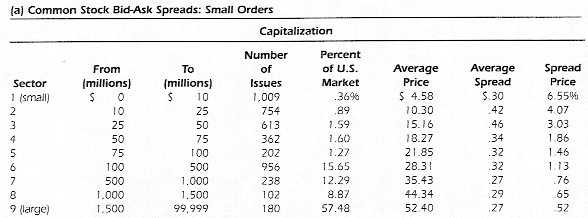Spread Bid and Ask Spread in Day Trading
Post on: 3 Июль, 2015 No Comment

You can opt-out at any time.
Day trading markets have separate buying and selling prices, known as the bid (buying) and ask (selling). The distance between these two prices varies, and can affect whether ot not a particular market can be traded, and if so, how the market can be traded.
Small Spread
When the bid and ask prices are close to each other, the spread is a small spread. For example, if the bid and ask prices on the YM (the Dow Jones futures market) were at 13000 and 13001, the spread would be 1 tick .
A small spread will exist when a market is being actively traded, and has high volume (number of contracts being traded). For many popular day trading markets, this is the case throughout the trading day, but for other markets, this only happens at certain times of the day, such as the European open and the US open.
Large Spread
When the bid and ask prices are far apart, the spread is a large spread. For example, if the bid and ask prices on the EUR (the Euro to US Dollar futures market) were at 1.3405 and 1.3410, the spread would be 5 ticks .
A large spread will exist when a market is not being actively traded, and has low volume (number of contracts being traded). For example, many day trading markets that usually have small spreads, will have large spread during lunch, or when traders are waiting for an economic news release.
Affects on Trading
A small spread is the type of spread that most day traders prefer, because it allows their orders to be filled at the prices that they want. Therefore, many day traders will temporarily stop trading if their market has a large spread.

A large spread causes orders (especially market orders) to be filled at unwanted prices, which then requires adverse adjustments to the trading system to compensate (such as increasing a stop loss).
Trading the Spread
Some day traders make trades that try to take advantage of the spread, and these traders therefore prefer a large spread. Trading systems that trade the spread are collectively known as scalping trading systems (and the traders are known as scalpers), because they only want a few ticks profit with each trade. An example of trading the spread would be to place simultaneous limit (not market) orders, to buy at the bid price, and sell at the ask price, and wait for both orders to be filled.
Small Spread Markets
Some popular day trading markets that usually have small spreads are :














